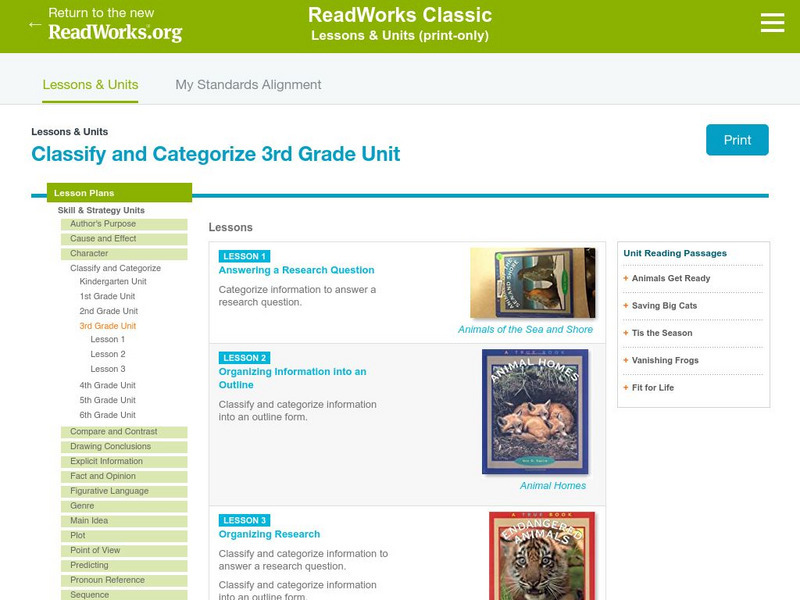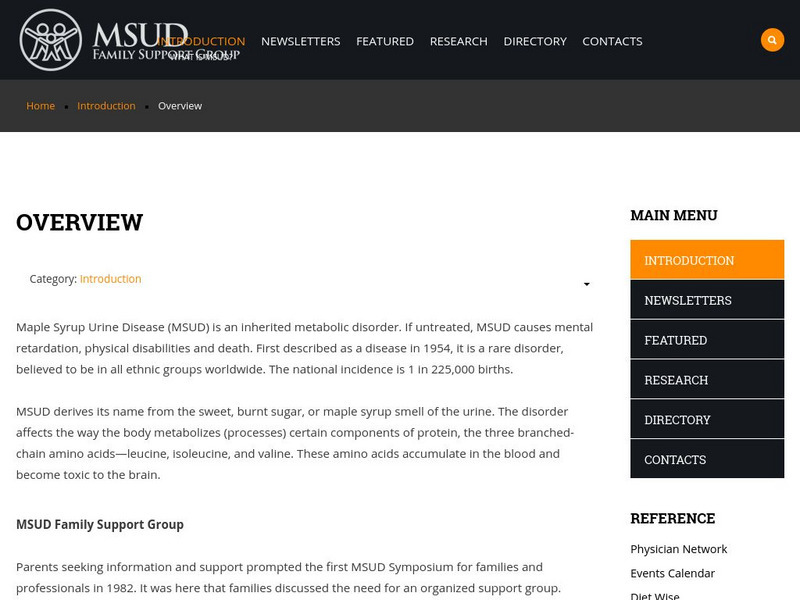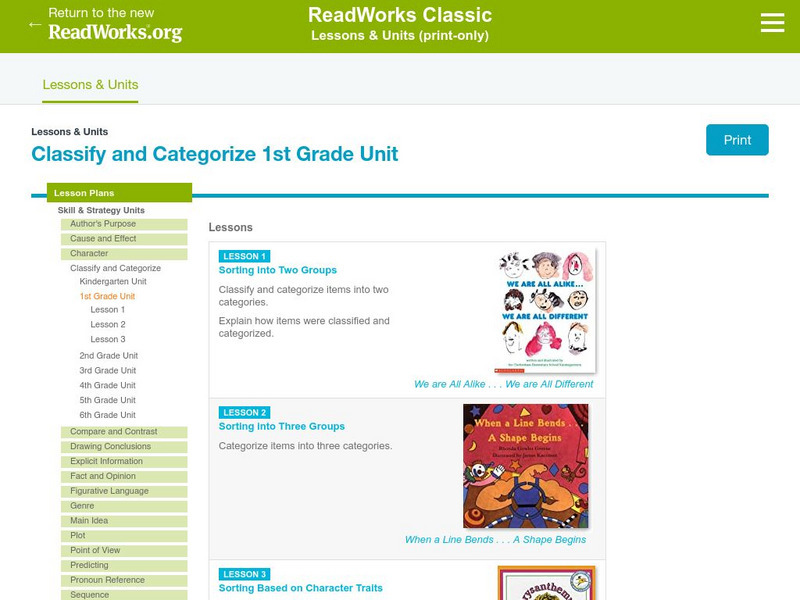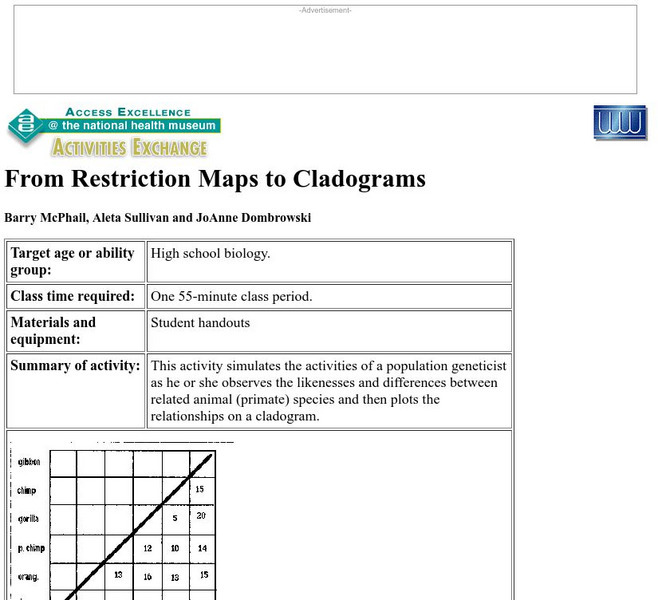Hi, what do you want to do?
Alabama Learning Exchange
Alex: The Real Number System
This lesson focuses on a clear understanding of the real number system by using a variety of teaching strategies. A graphic organizer on a slideshow illustrates how the classifications of numbers relate. A kinesthetic activity helps...
Alabama Learning Exchange
Alex: Shopping With the Dewey Decimal System
This activity is an introduction to the ten main categories of the Dewey Decimal Classification System. The Dewey Decimal Classification System will be compared with the familiar layout of a grocery store. Students will organize grocery...
Other
Flickr: Critical Thinking Skills Poster
A downloadable critical thinking skills poster based on the original six levels of Bloom's taxonomy.
Alabama Learning Exchange
Alex: Know the Dewey: That's a Rap
Middle school learners develop an understanding of the organization of the library through demonstration, creative writing, book searches, and Internet use.
Famous Scientists
Famous Scientists: Carolus Linnaeus
Learn about the life and work of Carolus Linnaeus, the scientist who formalized the modern system of naming organisms called binomial nomenclature.
Read Works
Read Works: Classify and Categorize 3rd Grade Unit
[Free Registration/Login Required] A three-lesson plan unit on classifying and categorizing through which students learn how to categorize information to answer research questions and then to organization that information into an...
Stanford University
Stanford University: Sea Urchin Natural History
Stanford University offers an excellent review of the biology and ecology of sea urchins. After reading the text, try the reproduction/survival game!
National Health Museum
Nhm: Amino Acid Sequences Show Evolution
This lesson plan focuses on differences in the amino acid sequence of hemoglobin and myoglobin proteins. They use the number of differences to create a phylogenetic tree.
Other
Maple Syrup Urine Disease: An Overview
Read about the rare inherited disorder affecting newborn babies and children called maple syrup urine disease(MSUD). Including information on how this condition is inherited and how its different forms affect the body, this article is...
National Health Museum
Access Excellence: Making a Phylogenetic Tree Lesson Plan
Constructing phylogenetic trees may be a daunting task for learners, but this lesson plan is a simulation of what molecular biologists must do to determine relationships. This plan is for students who have a good grasp of DNA structure...
Other
Path Finder Science: Tardigrades
This site displays information about a tardigrades research study that students were involved in. Tardigrades are fascinating, tiny creatures that can survive under the most extreme conditions. The structure of the project is there for...
PBS
Pbs Teachers: Scientific American: The Wild West: Nasty Critters
Research the taxonomy, physiology and relatives of scorpions and create a mobile. Explore the stereoscopic senses of pit vipers, and experience how perception can be augmented by causing fluorescent paint to glow with UV light.
TED Talks
Ted: Ted Ed: Inside the Ant Colony
Ants have one of the most complex social organizations in the animal kingdom; they live in structured colonies that contain different types of members who perform specific roles. Deborah M. Gordon explains the way these incredible...
Curated OER
Merriam Webster: Visual Dictionary Online: Starfish Morphology
Labeled diagram of a starfish.
Read Works
Read Works: Classify and Categorize 1st Grade Unit
[Free Registration/Login Required] A three-lesson unit on classifying and categorizing through which students learn how to sort items into two and three categories and explain how each group is classified. Finally, students categorize...
BBC
Bbc: Nature Wildfacts: Dromedary Camel
The world's most common camel is the Dromedary. Find out more on the Dromedary through this detailed fact sheet and photos.
National Health Museum
Nhm: Restriction Maps to Cladograms Lesson
This lesson plan requires students to analyze DNA restriction maps to determine the differences in the sequence for several primates and humans. They then use the information to create a cladogram.
EL Education
El Education: In the Zone: Where the Land Meets the Water
This field guide to the marine organisms of the intertidal zone of Casco Bay was created by 7th grade students in Portland, Maine, as part of a Learning Expedition called, "In the Zone." Students were engaged in scientific research at...
Curated OER
Secondary Science Program: The Six Kingdoms
A short overview of the six kingdoms in our scientific classification system: Plants, Animals, Protists, Fungi, Archaebacteria, and Eubacteria. A good explanation of how organisms are placed in their particular kingdom.
Curated OER
Secondary Science Program: The Six Kingdoms
A short overview of the six kingdoms in our scientific classification system: Plants, Animals, Protists, Fungi, Archaebacteria, and Eubacteria. A good explanation of how organisms are placed in their particular kingdom.
Curated OER
Secondary Science Program: The Six Kingdoms
A short overview of the six kingdoms in our scientific classification system: Plants, Animals, Protists, Fungi, Archaebacteria, and Eubacteria. A good explanation of how organisms are placed in their particular kingdom.
Curated OER
Secondary Science Program: The Six Kingdoms
A short overview of the six kingdoms in our scientific classification system: Plants, Animals, Protists, Fungi, Archaebacteria, and Eubacteria. A good explanation of how organisms are placed in their particular kingdom.



















